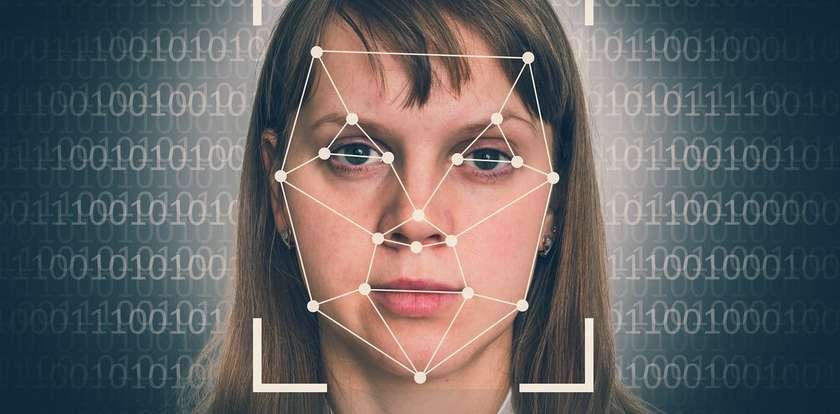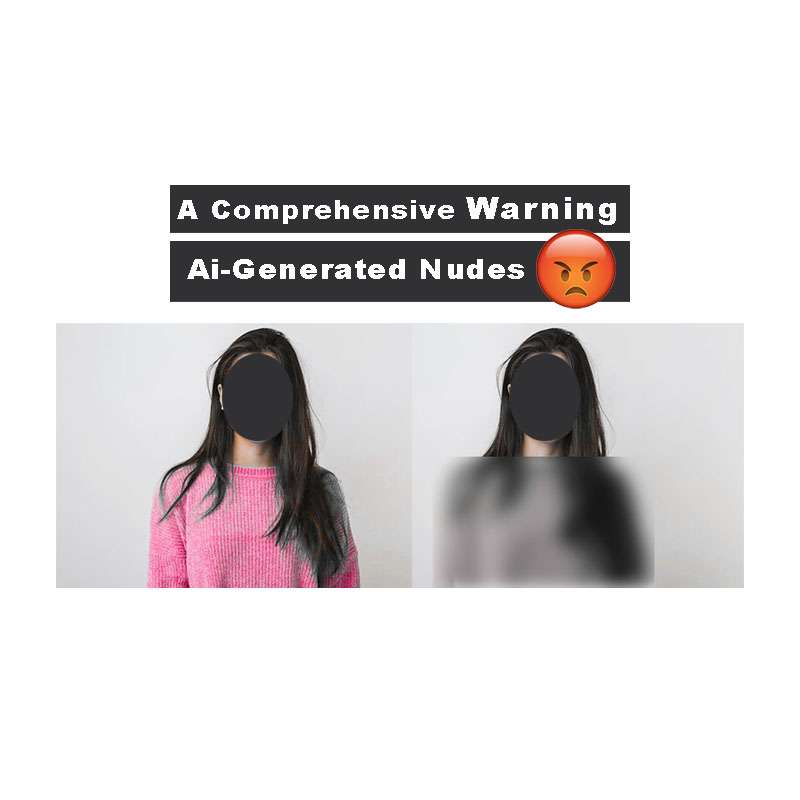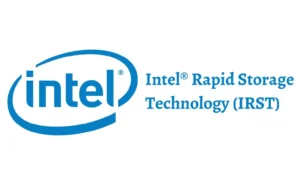Table of Contents
1. Introduction to Ai Nude
In recent years, the transformative impact of artificial intelligence (AI) has been evident across various domains, ushering in unprecedented capabilities. However, the darker side of AI, particularly the generation of nude content through sophisticated algorithms, presents significant risks to privacy, security, and ethical norms. This article aims to explore the multifaceted aspects of AI nude, providing insights into the rise of this phenomenon and its far-reaching consequences.
2. The Rise of AI-Generated Nude
AI nude, commonly known as “deepfakes,” have gained prominence due to the convergence of advanced machine learning algorithms and easily accessible data. These algorithms have the ability to create highly realistic, yet entirely fabricated, explicit content featuring individuals who may have never participated in such activities.
2.1 Understanding Deepfake Technology
At the core of this issue is the technology known as deepfake, a portmanteau of “deep learning” and “fake.” Deepfake technology leverages deep learning algorithms to manipulate and superimpose realistic-looking images or videos onto existing content. As these algorithms become more sophisticated, the line between reality and fabrication blurs, raising concerns about the potential for misuse.
Deepfake algorithms analyze vast datasets, learning the nuances of facial expressions, body language, and voice tones. They then use this information to create synthetic content that appears authentic to the untrained eye. While initially developed for entertainment purposes, such as impersonating celebrities in videos, the technology has evolved to more nefarious applications, including the creation of explicit content without the subject’s knowledge or consent.

3. Privacy Concerns and Consent
One of the primary concerns surrounding AI nude revolves around privacy infringement and the violation of consent. Individuals may find themselves unknowingly featured in explicit content, leading to severe emotional distress, reputational damage, and legal consequences. This section delves into the implications of such privacy breaches and the need for a robust consent framework.
3.1 Unconsented Content: A Breach of Privacy
The ease with which deepfake technology can be employed poses a significant threat to personal privacy. Instances of individuals having their likeness used in explicit content without their knowledge or consent have surged, necessitating a reevaluation of privacy norms in the digital age.
The violation of privacy extends beyond the act of creating explicit content; it encompasses the subsequent dissemination and potential long-term impact on the individual’s life. The emotional toll of discovering one’s image or video in compromising situations without any prior knowledge is profound.
3.2 The Urgent Need for Consent Standards
Establishing clear and enforceable standards for obtaining consent in the creation and distribution of explicit AI-generated content is crucial. This involves addressing challenges related to verification, digital rights, and ensuring that individuals have agency over their own digital identities.
Consent standards must evolve to keep pace with technological advancements. Digital literacy initiatives can empower individuals to navigate the complexities of online consent and better protect themselves from potential exploitation.

4. Deepfake Threats and Misuse
Beyond privacy concerns, the malicious use of AI nude extends to various forms of exploitation, harassment, and potential national security risks. This section explores the darker implications of deepfake technology.
4.1 Exploitation and Blackmail
AI nude are increasingly weaponized for extortion and blackmail. Perpetrators use fabricated content to coerce victims into compliance, threatening to release compromising material unless their demands are met. The power dynamics shift as malicious actors exploit individuals’ vulnerabilities, capitalizing on the fear of reputational damage and social stigma.
Instances of individuals, including public figures and influencers, falling victim to such schemes highlight the urgency in addressing the legal and technological gaps that enable these forms of exploitation.
4.2 National Security and Deepfake Manipulation
The potential for deepfakes to manipulate public perception and influence political narratives raises national security concerns. From misinformation campaigns to the creation of fabricated compromising content involving public figures, the implications for democratic processes are profound.
Governments and cybersecurity agencies are grappling with the challenge of identifying and mitigating the impact of deepfake manipulation on public opinion. The evolving nature of these threats demands a dynamic and collaborative response from the global community.
5. Legal and Ethical Implications
As the prevalence of AI nude continues to grow, legal and ethical frameworks struggle to keep pace. This section explores the challenges associated with regulating this emerging technology and the ethical considerations that demand attention.
5.1 Legal Gaps and Challenges
Existing legal frameworks often fall short in addressing the nuanced challenges posed by AI-generated explicit content. The difficulty in prosecuting those responsible and holding platforms accountable further complicates the legal landscape.
As lawmakers seek to address these challenges, they face the dilemma of balancing freedom of expression with the protection of individuals’ rights. Legislators must collaborate across borders to create cohesive and enforceable frameworks that discourage the creation and distribution of non-consensual explicit content.
5.2 Ethical Considerations in AI Development
The ethical responsibilities of AI developers and tech companies come into focus, requiring a commitment to building and deploying technology in ways that prioritize user welfare, consent, and societal well-being. Ethical guidelines should encompass the entire lifecycle of AI development, from data collection and model training to deployment and ongoing monitoring.
Tech companies should actively engage in ethical audits and consult with diverse stakeholders, including privacy advocates, to ensure that AI technologies align with societal values and do not perpetuate harm.
6. The Psychological Impact of Ai Nude
Beyond legal and ethical concerns, the psychological toll on individuals featured in AI-generated explicit content is profound. This section explores the emotional and mental health ramifications of becoming a victim of this technology.
6.1 Emotional Distress and Stigmatization
Victims of AI-Generated nude often experience heightened emotional distress, including anxiety, depression, and feelings of isolation. The pervasive stigmatization associated with being featured in explicit content exacerbates these challenges.
The psychological impact extends beyond the individual to their social circles, as friends, family, and colleagues may inadvertently come across the fabricated content. Support systems play a crucial role in helping victims cope with the emotional aftermath.
6.2 Addressing Mental Health Consequences
Efforts to address the mental health consequences of AI-generated explicit content involve not only legal recourse but also the development of support systems, counseling services, and destigmatization campaigns. Mental health professionals play a pivotal role in providing targeted interventions and helping individuals rebuild their lives after such traumatic experiences.
Public awareness campaigns are essential to challenge societal perceptions and reduce the shame and blame often associated with being a victim of non-consensual explicit content. By fostering empathy and understanding, communities can contribute to creating a more supportive environment for those affected.
7. Protective Measures and Regulations
In response to the growing threats posed by AI nude, various protective measures and regulatory efforts are underway. This section explores initiatives aimed at mitigating risks and holding those responsible accountable.
7.1 Technological Safeguards
Advancements in AI detection technology are crucial for identifying and mitigating the impact of deepfakes. Collaboration between tech companies, researchers, and law enforcement is essential to stay ahead of evolving threats.
Technological safeguards involve the continuous improvement of algorithms to detect subtle anomalies indicative of deepfake content. Machine learning models must be trained on diverse datasets to enhance their accuracy in differentiating between genuine and manipulated content.
7.2 Legislative Responses
Countries are beginning to enact legislation specifically targeting the creation and dissemination of AI-generated explicit content. Examining these regulatory frameworks provides insights into evolving approaches to combatting this issue.
Legislation should address not only the creation and distribution of explicit content but also the facilitation and hosting of such material by online platforms. Striking a balance between enforcement and protection of free speech requires nuanced legal frameworks that reflect the complexities of the digital landscape.
8. Industry and Technological Responses
Tech companies and industry stakeholders play a pivotal role in shaping the trajectory of AI-generated explicit content. This section delves into the actions taken by the tech industry to address the challenges posed by deepfake technology.
8.1 Platform Policies and Moderation
Major social media and content-sharing platforms are implementing stricter policies and enhanced content moderation tools to identify and remove AI-generated explicit content promptly.
Platform policies often include explicit guidelines prohibiting the creation and distribution of non-consensual explicit content. The implementation of AI-driven content moderation tools enables platforms to detect and remove deepfake material more efficiently.
8.2 Collaborative Initiatives
Industry collaboration is crucial in developing shared databases of AI-generated content, enabling platforms to collectively combat the spread of deepfakes more effectively. Collaborative initiatives involve the sharing of insights, best practices, and technological developments to stay ahead of emerging threats.
Partnerships between tech companies, research institutions, and government agencies are instrumental in fostering a united front against the misuse of AI technology. These collaborations extend beyond borders, acknowledging the global nature of the challenge.
9. Conclusion: Safeguarding the Digital Intimacy
As the world grapples with the proliferation of AI nude, it becomes imperative to strike a balance between technological innovation and safeguarding individual privacy. This concluding section emphasizes the need for collective action, including legislative measures, technological advancements, and societal awareness, to protect the digital intimacy of individuals.
In the quest to navigate the dark side of AI nude, a comprehensive approach is essential. By understanding the risks and taking collective action, we can strive to preserve the sanctity of digital intimacy in an era dominated by artificial intelligence.
10. FAQs
Q1: What are deepfakes?
A1: Deepfakes are AI-generated content, often in the form of images or videos, that convincingly superimpose the likeness of one individual onto another. This technology raises concerns about privacy, consent, and the potential for malicious use.
Q2: How can individuals protect themselves from AI-generated nudes?
A2: Protective measures include being cautious about sharing personal information online, using privacy settings on social media, and staying informed about the latest developments in AI detection technology.
Q3: Are there international laws addressing AI-generated explicit content?
A3: While efforts are underway, there is no universal legal framework addressing AI-generated explicit content. Various countries are enacting their own legislation to combat the challenges posed by deepfake technology.
Q4: What role do social media platforms play in combating AI-generated explicit content?
A4: Social media platforms are implementing strict policies and content moderation tools to identify and remove AI-generated explicit content promptly. These measures aim to create a safer online environment and prevent the dissemination of non-consensual explicit material.
Q5: How can the public contribute to addressing the issue of AI-generated nudes?
A5: Public awareness and advocacy are crucial in addressing the issue of AI nude. By staying informed, supporting legislation, and holding tech companies accountable, individuals can contribute to creating a safer digital landscape for everyone.
Also Read:
- Conquer the Gaming Realm: Top 5 Best Gaming Laptops Under $700
- Unveiling the Future: Top 5 Best Gaming Monitors Under 500 in 2024
- Cloudways 2024 Unveiled: Comprehensive Insights
- Comprehensive Review of Corel Painter 2024
- Synthesia AI: Elevating Content Creation with Cutting-Edge Video Generation – Review 2024
- Securing Your Virtual World: An In-Depth Review of NordVPN’s Features and Functionality



